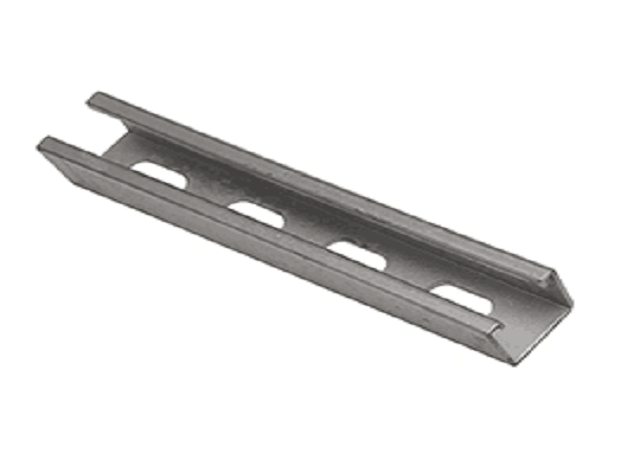GI Slotted C Channel is produced by cold bending hot-rolled coils. It features thin walls, light weight, excellent sectional performance, and high strength. Compared to traditional channel steel, it can save 30% of material with the same strength.
GI Slotted C Channel has the advantages of adjustable specifications and high compressive strength.
Although the cross-sectional size of the cold-formed GI Slotted C Channel is lightweight, it perfectly matches the force characteristics of roof purlins, allowing the mechanical performance of the steel to be fully utilized.
The various fittings of GI Slotted C Channel can be connected into different combinations, and it has an aesthetically pleasing appearance.
The use of GI Slotted C Channel can reduce the weight of building roofs and decrease the amount of steel used in the project. Therefore, it is also known as economical and efficient steel, and is a new building material that can replace traditional steel purlins like channel steel, angle steel, and steel pipes.
Feeding
First, place the prepared steel coils or steel sheets accurately on the automatic feeding device according to production needs.
Leveling
After feeding, the material is leveled by a leveling machine. The leveling machine uses multiple sets of upper and lower pressure rollers to apply uniform pressure to the material, eliminating surface defects such as waves and bends, providing flat raw material for subsequent forming steps.
Forming
The leveled material enters the forming machine group, where it is gradually pressed and bent by a series of forming molds to form the preliminary contour of the GI Slotted C Channel. In this process, the precise design and adjustment of the molds are crucial to ensure that the formed GI Slotted C Channel has accurate dimensions and a regular shape.
Shaping
After preliminarily forming, the GI Slotted C Channel enters the shaping stage. The shaping machine further precisely presses the steel, consolidating its shape and ensuring it meets design dimensional accuracy and shape stability.
Straightening
The shaped GI Slotted C Channel may be slightly bent due to minor deformations during the forming process, so it needs to be straightened by a straightening machine. The straightening machine uses multiple sets of rollers to apply appropriate force to the GI Slotted C Channel, restoring it to a completely straight state and ensuring the product's straightness and dimensional accuracy.
Measuring Length
The straightened GI Slotted C Channel is measured for length by a measuring device to ensure that each piece meets order requirements. The measuring device typically uses high-precision photoelectric sensors or laser rangefinders to ensure the accuracy and reliability of the measurement results.
Punching Round Tension Holes
At specified positions, a punching machine is used to punch round tension holes in the GI Slotted C Channel. These round holes are typically used to enhance the structural strength of the GI Slotted C Channel or as connection points during installation. The punching process must strictly control the hole position and diameter to ensure the overall performance and aesthetics of the product.
Punching Oval Connection Holes
In addition to round tension holes, the GI Slotted C Channel also needs to have oval connection holes punched at specific positions to connect with other components. During punching, accurate control of hole positions and diameters is required to ensure that the connection holes are accurately positioned and properly shaped to meet installation and usage needs.
Forming and Cutting
Finally, the GI Slotted C Channel, after going through all the above steps, enters the forming and cutting machine. This machine precisely cuts the GI Slotted C Channel according to preset lengths, ensuring that its ends are regularly shaped and burr-free.
Widely used in purlins and wall beams of steel structure buildings, GI Slotted C Channel can also be combined into lightweight trusses, brackets, and other building components. Additionally, it can be used for columns, beams, and arms in machinery and light industrial manufacturing.
In seismic support and suspension systems, GI Slotted C Channel is also the main material.
JUNSEN produces GI Slotted C Channel with a smooth surface, uniform zinc coating, strong adhesion, high dimensional accuracy, corrosion resistance, and durability, making it your first choice for GI Slotted C Channel.
